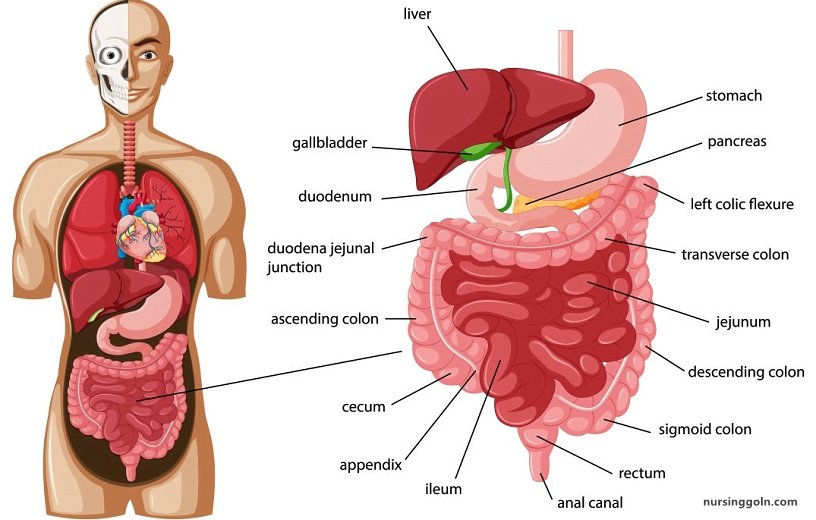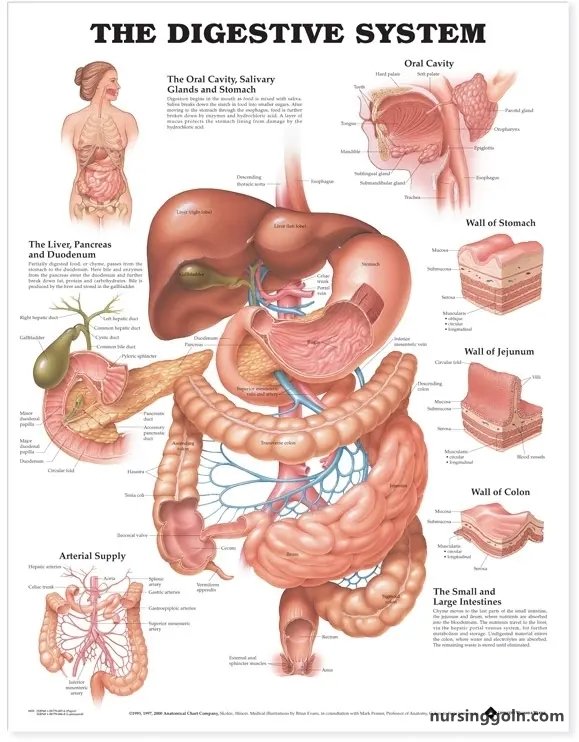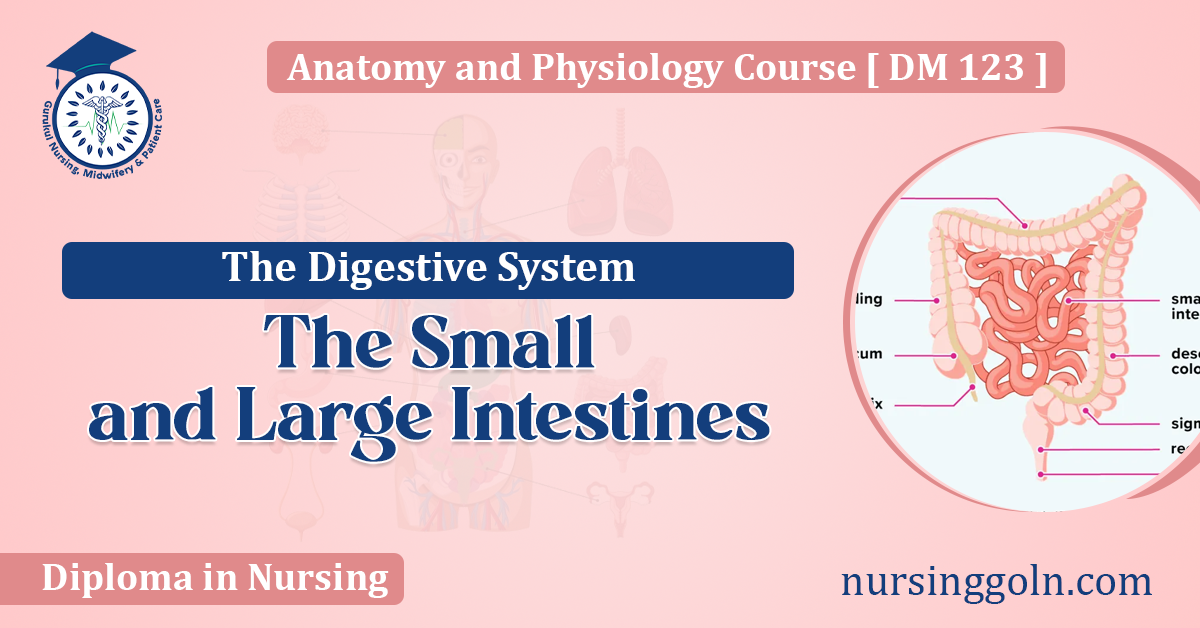Today our topic of discussion is ” The Small and Large Intestines “. The digestive system is a marvel of engineering, orchestrating the breakdown and absorption of nutrients from the food we consume. Among the most critical components of this system are the small and large intestines.
These winding, tube-like structures are where the majority of digestion and nutrient absorption take place. In this comprehensive article, we will explore the anatomy, functions, and intricate processes that occur within the small and large intestines, highlighting their pivotal roles in the digestion and absorption of essential nutrients.
The Small and Large Intestines: The Digestive System

1. Anatomy of the Small Intestine
The small intestine is a convoluted tube extending from the stomach to the large intestine, and it is a central hub for nutrient absorption. It can be further divided into three segments:
a. Duodenum: The Chemical Control Center
- Receiving Bile and Pancreatic Secretions: The first part of the small intestine, the duodenum, receives digestive secretions from two critical sources:
- Liver and Gallbladder: The liver produces bile, which is stored in the gallbladder and released into the duodenum when needed. Bile emulsifies fats, breaking them into smaller droplets to increase their surface area for efficient digestion.
- Pancreas: The pancreas secretes various digestive enzymes, including:
- Amylase: For carbohydrate digestion.
- Lipase: For fat digestion.
- Proteases: For protein digestion.
- Regulation of Bile Release: The hormone cholecystokinin (CCK) is released in response to the presence of fats in the duodenum. CCK stimulates the gallbladder to contract and release bile.
b. Jejunum: The Absorptive Hall
- Site of Nutrient Absorption: The jejunum is where the majority of nutrient absorption occurs. Its inner lining is covered in finger-like projections called villi, which, in turn, have microvilli on their surface. This extensive surface area allows for efficient absorption of nutrients into the bloodstream.
- Absorption of Specific Nutrients: Different segments of the small intestine specialize in the absorption of specific nutrients. For example, the jejunum is primarily responsible for absorbing amino acids, sugars, and most of the fatty acids.
c. Ileum: The Culminating Finale
The ileum marks the end of the small intestine and plays a vital role in the absorption of vitamin B12 and the reabsorption of bile salts.

2. Functions of the Small Intestine
The small intestine is the central site for digestion and nutrient absorption, fulfilling a range of crucial functions:
- Digestion: The small intestine continues the digestion of carbohydrates, fats, and proteins initiated in the mouth and stomach. Enzymes secreted by the pancreas, in conjunction with the enzymes present in the small intestine’s lining, break down macronutrients into their simplest forms.
- Nutrient Absorption: The jejunum, in particular, serves as the primary site for the absorption of nutrients. Nutrients like glucose, amino acids, and fatty acids are transported into the bloodstream and distributed to cells throughout the body.
- Water and Electrolyte Absorption: The small intestine also absorbs water and electrolytes, helping to maintain fluid balance and prevent dehydration.
- Vitamin Absorption: The ileum is responsible for the absorption of vitamin B12, a vital nutrient for nerve function and the formation of red blood cells.

3. Anatomy of the Large Intestine
The large intestine, often referred to as the colon, is the next stop in the digestive journey after the small intestine. It consists of several segments:
- Cecum: The cecum is a pouch-like structure that connects the ileum of the small intestine to the colon. It is the site where the appendix, a small, finger-like projection, is located. While the appendix’s function remains somewhat elusive, it is thought to play a role in the immune system.
- Colon: The colon is divided into four segments: the ascending colon, transverse colon, descending colon, and sigmoid colon.
- Rectum: The rectum serves as the temporary storage site for formed feces before elimination.
- Anal Canal: The anal canal is the final portion of the large intestine, connecting to the anus, where feces exit the body.

4. Functions of the Large Intestine
The large intestine plays critical roles in digestion, water absorption, and waste elimination:
- Fermentation and Gut Microbiota: The large intestine houses a complex community of microorganisms, the gut microbiota, which plays a vital role in fermenting undigested carbohydrates, producing gases, and generating certain vitamins, such as vitamin K and some B vitamins.
- Water and Electrolyte Absorption: The large intestine reabsorbs water and electrolytes from undigested food material, aiding in maintaining proper hydration and controlling stool consistency.
- Formation of Feces: As undigested material travels through the large intestine, water and electrolytes are absorbed, and feces are formed.
- Waste Elimination: The large intestine stores formed feces in the rectum until it is ready for elimination. When the rectum becomes full, stretch receptors signal the brain, leading to the urge to defecate. The anal sphincters then relax, allowing the passage of feces through the anus and out of the body.
5. Fermentation and the Gut Microbiota
The large intestine is home to a complex community of microorganisms collectively known as the gut microbiota. These microorganisms play a vital role in digestion and overall health:
- Fermentation: The gut microbiota ferments undigested carbohydrates, producing gases like carbon dioxide, methane, and hydrogen. This process can lead to flatulence or gas production in the digestive system.
- Production of Vitamins: Some gut microorganisms produce essential vitamins, such as vitamin K and certain B vitamins, that are absorbed and utilized by the body.
- Immune System Regulation: The gut microbiota plays a crucial role in regulating the immune system and protecting against harmful pathogens.
- Digestion of Fiber: Certain gut bacteria break down dietary fiber into short-chain fatty acids, which provide an energy source for the cells lining the colon and have various health benefits.

6. Disorders and Conditions of the Small and Large Intestines
The small and large intestines are susceptible to various disorders and conditions that can disrupt their normal functioning:
- Inflammatory Bowel Disease (IBD): IBD is an umbrella term for chronic inflammatory conditions of the gastrointestinal tract. Two common forms of IBD are Crohn’s disease and ulcerative colitis.
- Irritable Bowel Syndrome (IBS): IBS is a chronic condition characterized by abdominal pain, bloating, and changes in bowel habits. It does not cause structural damage to the intestines but can significantly affect a person’s quality of life.
- Celiac Disease: Celiac disease is an autoimmune condition in which the ingestion of gluten triggers an immune response that damages the small intestine. This condition necessitates a strict gluten-free diet.
- Diverticulitis: Diverticulitis is the inflammation of small pouches (diverticula) that can form in the colon’s lining. These pouches can become infected and cause discomfort.
- Colorectal Cancer: Colorectal cancer begins in the colon or rectum and often starts as polyps. Regular screenings can help detect and treat it in its early stages.
- Constipation: Constipation is characterized by infrequent bowel movements, hard stools, and straining during defecation. It can be a result of various factors, including dietary choices, lack of physical activity, or certain medical conditions.
- Diarrhea: Diarrhea is the frequent passage of loose, watery stools and can be caused by infections, dietary factors, or underlying medical conditions.

7. Diet and Gut Health
Diet plays a significant role in maintaining the health of the small and large intestines. Consuming a balanced diet rich in fiber, fruits, vegetables, and probiotic foods can promote a healthy gut microbiota and support proper digestive function. Adequate hydration is also crucial for maintaining proper water absorption in the large intestine.
The small and large intestines are at the heart of the digestive system, where the majority of digestion and nutrient absorption occur. These intricate organs, with their specialized functions and complex microbial communities, play pivotal roles in breaking down food, extracting nutrients, and facilitating waste elimination. Understanding the anatomy and functions of the small and large intestines is essential for appreciating the vital roles they play in overall health and well-being. As we journey through the complexities of the digestive system, the small and large intestines emerge as the dynamic hubs of digestion, nutrient absorption, and microbial interactions, crucial for our everyday functioning and health.
Read more:
